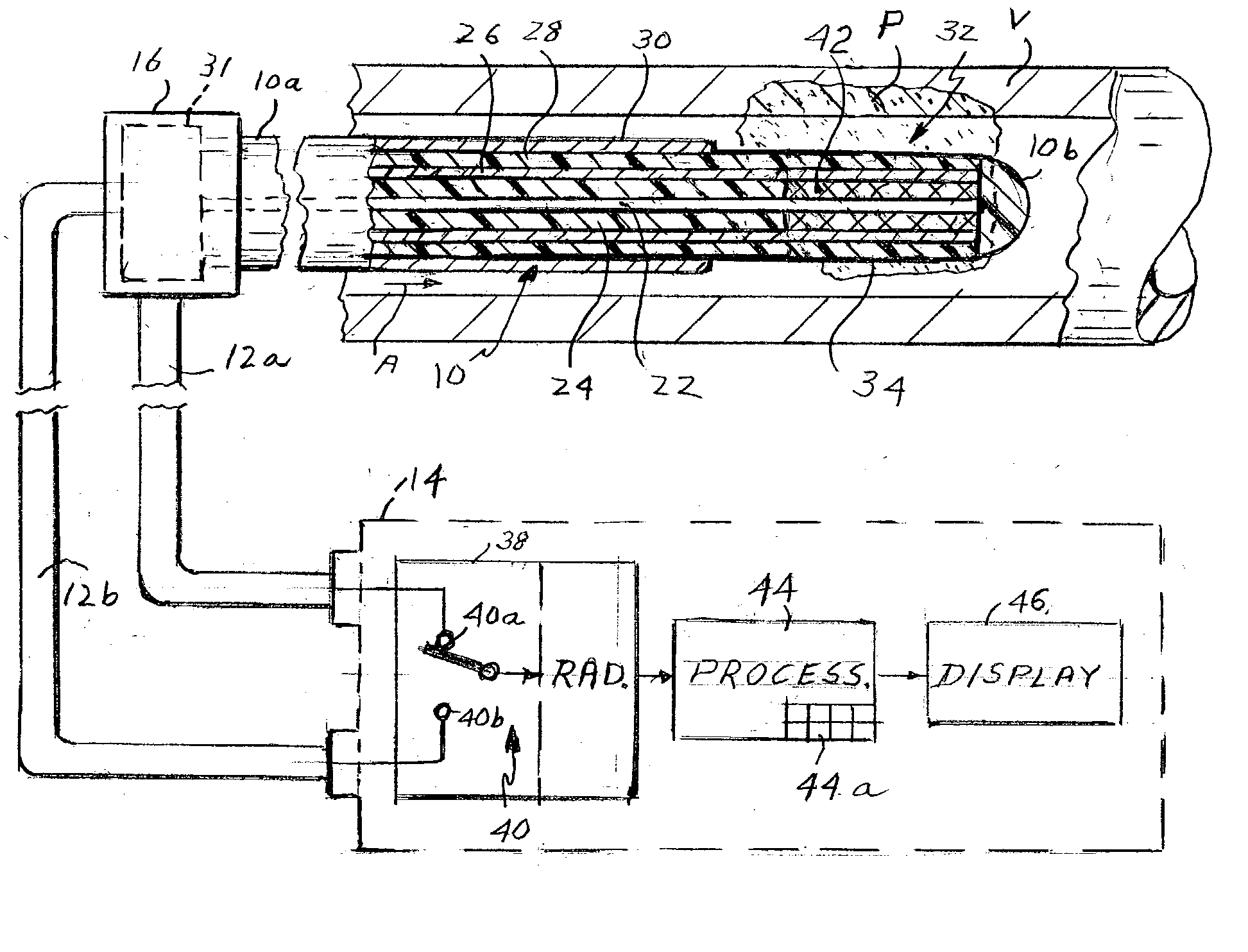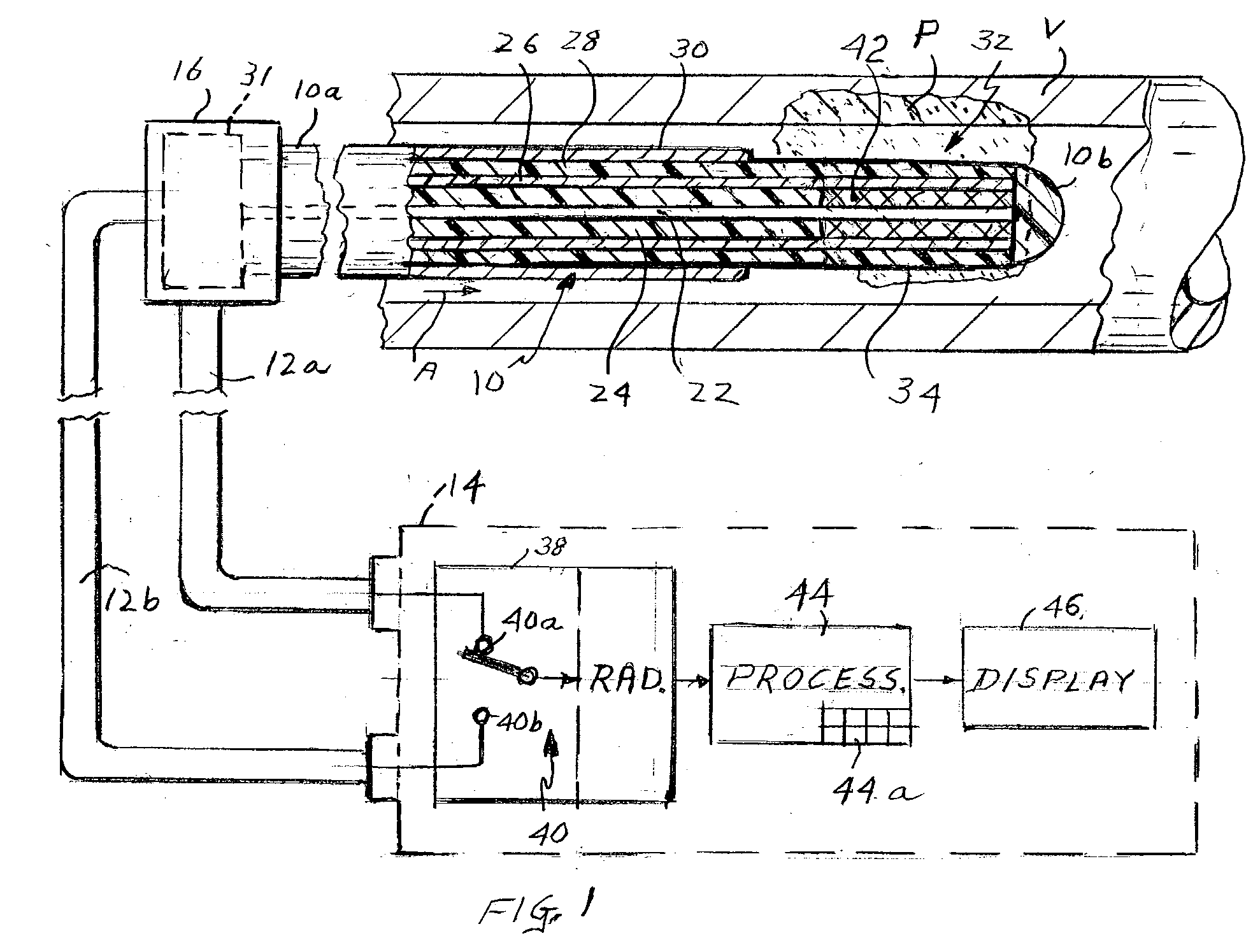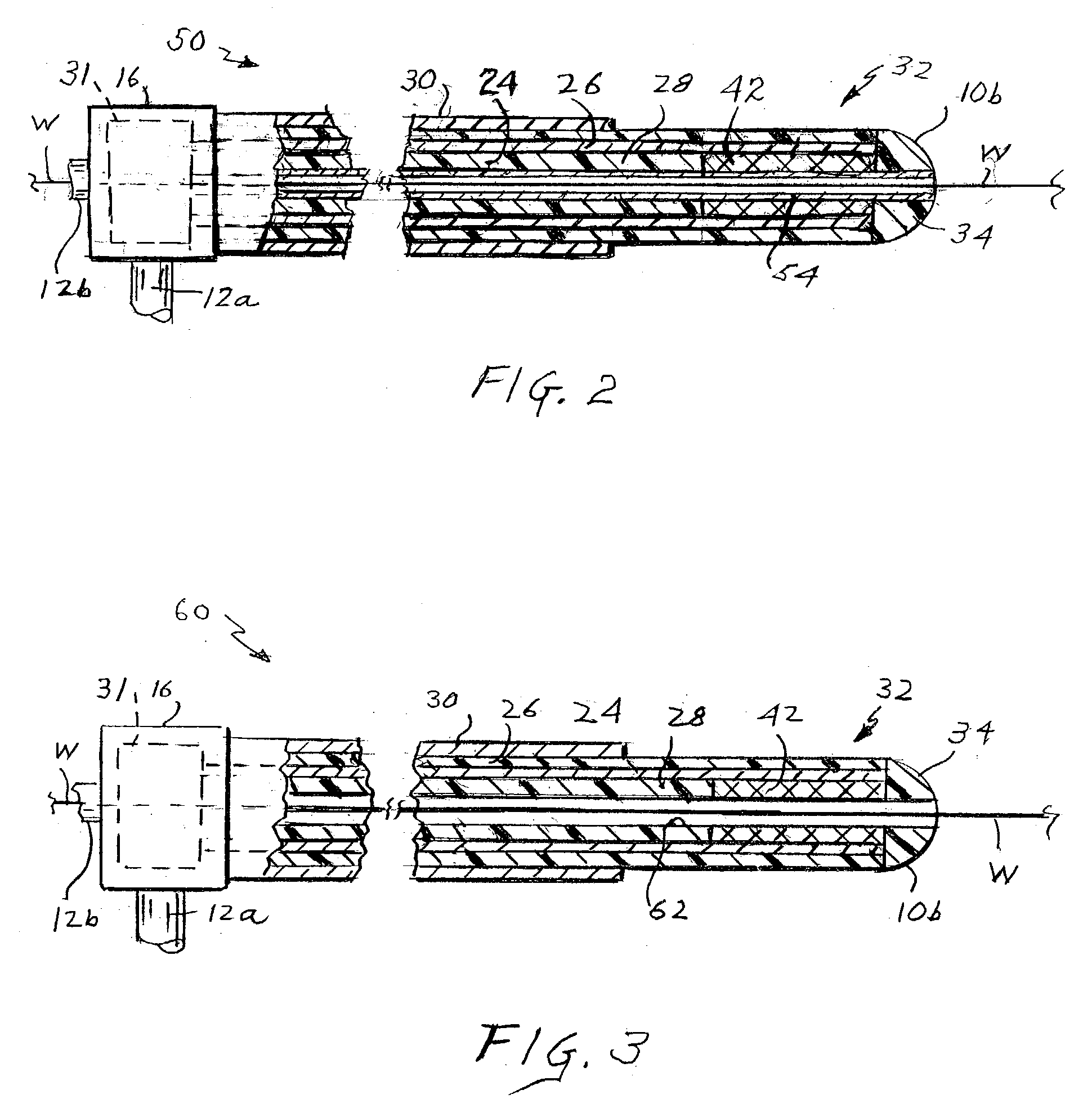Method and apparatus for detecting and treating vulnerable plaques
a plaque and vulnerable technology, applied in the field of methods and equipment for detecting and treating vulnerable plaques, can solve the problems of disadvantaged intravascular catheters, plaques that are not easily detectable, and are not amenable to detection by known intravascular catheters
- Summary
- Abstract
- Description
- Claims
- Application Information
AI Technical Summary
Benefits of technology
Problems solved by technology
Method used
Image
Examples
Embodiment Construction
[0029] Referring to FIG. 1 of the drawings, the present apparatus comprises a catheter shown generally at 10 for insertion into a blood vessel V which may have locations where vulnerable plaques P are embedded or engrained in the vessel wall. Such plaques P typically include a relatively large portion of the vessel wall, e.g. a third to a half of its circumference. Catheter 10 is connected by coaxial cables 12a and 12b to a detection and display unit 14. The catheter has a proximal end 10a to which cables 12a and 12b are connected by way of a fitting or connector 16 and a distal end or tip 10b. The catheter may have a length of 100 cm or more and is quite narrow and flexible so that it can be threaded along a conventional introducer, e.g. 8.5 French, allowing the distal end 10b of the catheter to be placed at a selected position in a patient's blood vessel V. Typically, vessel V is accessed by a vein in the patient's neck or groin.
[0030] The catheter may include an expandable perfor...
PUM
 Login to View More
Login to View More Abstract
Description
Claims
Application Information
 Login to View More
Login to View More - R&D
- Intellectual Property
- Life Sciences
- Materials
- Tech Scout
- Unparalleled Data Quality
- Higher Quality Content
- 60% Fewer Hallucinations
Browse by: Latest US Patents, China's latest patents, Technical Efficacy Thesaurus, Application Domain, Technology Topic, Popular Technical Reports.
© 2025 PatSnap. All rights reserved.Legal|Privacy policy|Modern Slavery Act Transparency Statement|Sitemap|About US| Contact US: help@patsnap.com



